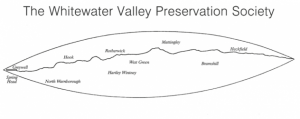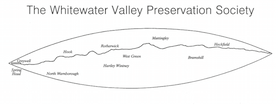The Whitewater Valley Preservation Society has published its response to the Environment Agency’s consultation on its charges.
The River Whitewater is failing to meet Good Ecological Status (GES) under the Water Framework Directive (WFD). As a direct result WVPS has raised funds to carry out a study into the Whitewater in the context of the Salmon and Trout Conservation UK’s River Fly Study. The survey was conducted at five sites along the river, in both spring and autumn. Results from the first year reveal that all sites fail on both of two indicators of a healthy system. Significant effort will be required to make improvements to the river’s ecology. The type of work likely to be required will be directly affected by the proposed increase in charges for river works. As a result, it will deter organisations such as WVPS from being able to carry out the works and thereby will effectively further damage, or at least fail to improve, the river ecology.
WVPS therefore objects to the scale of the Environment Agency’s proposed increases for charges for permits to carry out habitat improvement works in our local rivers.
There are many community groups, river trusts, wildlife groups and societies such as ours who, with limited funds, are currently making a real and important contribution towards improving rivers and streams and the implementation of the Water Framework Directive on failing water bodies. The work of these groups is not recognised in the assumptions behind the revised proposed charges.
The proposed charges are extortionately high – far too great reasonably to expect small organisations to pay, especially for small scale community based work relying on charitable funding and volunteer labour.
The charges imply that there will be financial gain from river improvement. This is simply not true for the projects, which organisations such as ours wish to undertake. The benefit is to the wider ecology, to society, and to meet Water Framework Directive objectives. This is work, which the EA itself should be undertaking or at least funding, to meet Water Framework Directive targets.
Read WVPS full response here:
EnvironmentAgencyCharges_WVPSresponse


